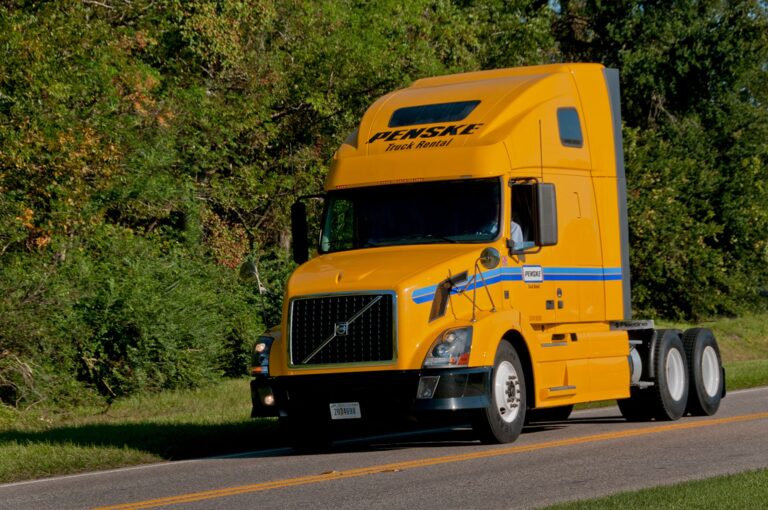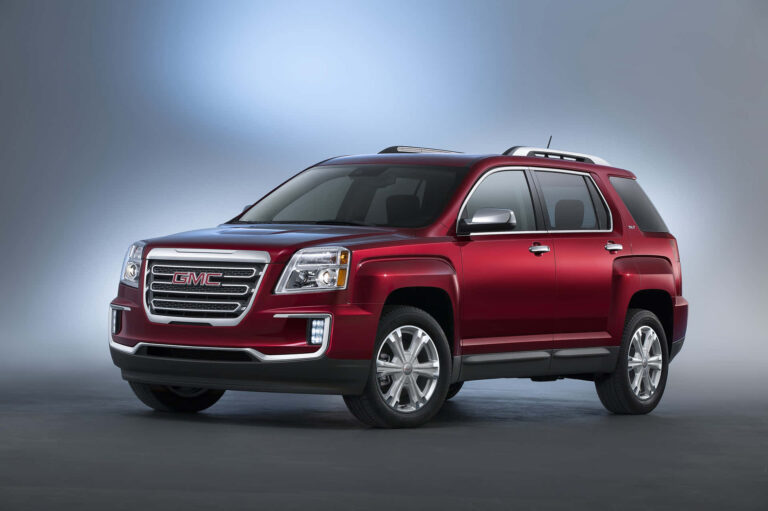What Is The Internal Width Of A Box Truck?
What Is The Internal Width Of A Box Truck? cars.truckstrend.com
When planning a move, transporting goods for your business, or shipping large items, a box truck often comes to mind as the ideal solution. While most people instinctively consider the truck’s length – 10 ft, 15 ft, 20 ft, or 26 ft – a crucial dimension often overlooked is its internal width. This measurement, referring to the clear, wall-to-wall space inside the cargo area, dictates whether your most critical items will fit comfortably, efficiently, and safely. Understanding the internal width is not just about maximizing space; it’s about preventing damage, optimizing loading, and ensuring you choose the right vehicle for the job.
This comprehensive guide will delve into the intricacies of box truck internal width, exploring its standard ranges, influencing factors, practical applications, and offering actionable advice to help you make informed decisions for your transportation needs.
What Is The Internal Width Of A Box Truck?
Understanding Box Truck Dimensions: Beyond Just Length
Box trucks are characterized by their enclosed cargo area, often referred to as the "box." While their overall length is the primary descriptor (e.g., a "26-foot box truck"), this only tells part of the story. The internal dimensions – length, width, and height – are what truly matter for loading. Of these, the internal width is particularly critical because it’s often the most restrictive dimension for wide items like sofas, mattresses, or multiple pallets.
The external width of a typical box truck is usually around 96 inches (8 feet). However, this is not the internal width. The walls of the truck, which include the structural frame, insulation, and interior lining, consume valuable inches. This is why a truck that looks 8 feet wide from the outside might only offer 6.5 to 7 feet of usable space inside.
The Standard Internal Width Range
The internal width of a box truck is not a universal constant but typically falls within a predictable range. For most commonly rented or commercially used box trucks, the internal width generally ranges from 78 inches (6 feet 6 inches) to 85 inches (7 feet 1 inch).
Here’s a breakdown of common internal widths by typical truck size:
- 10-12 Foot Box Trucks: Often used for smaller moves or local deliveries, these trucks typically have an internal width of 78-80 inches.
- 15-17 Foot Box Trucks: A popular choice for one to two-bedroom moves, their internal width usually ranges from 80-84 inches.
- 20-22 Foot Box Trucks: Ideal for larger homes or substantial cargo, these often provide an internal width of 80-85 inches.
- 24-26 Foot Box Trucks: The largest rental options, suitable for multi-bedroom homes or significant commercial loads, generally maintain an internal width of 80-85 inches.

It’s important to note that while the length of the truck increases significantly, the internal width tends to stabilize around the 80-85 inch mark for most standard models due to road width regulations and manufacturing consistency.
Factors Influencing Internal Width
Several elements can cause variations in a box truck’s internal width:
- Truck Manufacturer and Model: Different brands (e.g., Ford, GMC, Isuzu, Hino) and specific models will have slight design differences that impact wall thickness and thus internal width.
- Wall Construction and Insulation: Trucks designed for specific purposes, such as refrigerated units, will have significantly thicker, insulated walls to maintain temperature, thereby reducing internal width considerably. Even standard box trucks might have varying levels of insulation.
- Interior Features and Fixtures:
- E-track Systems/Tie-down Rails: These metal rails, essential for securing cargo, are mounted on the interior walls and can protrude, slightly reducing the effective usable width.
- Padded Walls/Lining: Some moving trucks come with built-in padding or durable plywood lining, which adds to wall thickness.
- Wheel Wells: This is a crucial consideration. The internal width measured above the wheel wells might be wider than the width between them. Wheel wells are typically 10-12 inches high and can significantly reduce the usable floor width in that area. Always consider the narrowest point for your widest items.
- Custom Modifications: Some commercial box trucks are custom-fitted with shelving, workbenches, or specialized equipment, which will naturally reduce the available internal width.
Why Internal Width Matters: Practical Applications
Understanding the internal width is paramount for several practical reasons:
- Moving Furniture: This is perhaps the most common application. Can your king-size mattress, large sofa, or bulky dresser fit without being tilted awkwardly or squeezed, risking damage? Knowing the internal width ensures smooth loading and safe transport.
- Shipping Pallets: A standard U.S. pallet measures 40 inches by 48 inches. Many assume a box truck can fit two 48-inch pallets side-by-side (requiring 96 inches of internal width). However, as established, the internal width is typically 80-85 inches. This means you generally cannot fit two standard pallets side-by-side across the width. They must be loaded lengthwise (40-inch side across the width) or one at a time, which impacts loading efficiency and capacity.
- Transporting Appliances and Equipment: Refrigerators, washing machines, industrial equipment, or large crates need sufficient clearance. The internal width determines if these items can be loaded straight in or if they require careful maneuvering.
- Maximizing Cargo Space and Efficiency: Knowing the exact usable width allows you to plan your loading strategy effectively, minimizing wasted space and potentially reducing the number of trips or the size of the truck needed.
- Safety and Damage Prevention: Forcing items into a space that’s too narrow increases the risk of damage to your goods or the truck itself. Proper fit ensures stability during transit.
Measuring Your Box Truck’s Internal Width
While rental companies provide dimensions, it’s always wise to verify, especially for critical loads. Here’s how to accurately measure:
- Open the Rear Door: Ensure the cargo area is clear of obstructions.
- Measure Wall-to-Wall: Use a long tape measure to measure the distance from one interior wall to the opposite wall.
- Measure at Multiple Heights: Take measurements near the floor, mid-height, and near the ceiling. This helps account for any tapering or slight variations.
- Account for Protrusions: Crucially, measure the narrowest usable width. This means measuring between any E-track rails, tie-downs, or other interior fixtures that protrude from the wall.
- Check Wheel Wells: Measure the width specifically between the wheel wells, as this will be the most restrictive point for items placed directly on the floor.
- Measure the Door Opening: Don’t forget the rear door opening width, as this can sometimes be narrower than the internal width of the box itself.
Tips for Optimizing Space and Choosing the Right Truck
- Always Check Actual Dimensions: Don’t rely solely on general estimates. Call the rental company or dealership and ask for precise internal width (and height/length) for the specific truck model you intend to use.
- Measure Your Largest Items: Before you even look at trucks, measure the widest, longest, and tallest items you plan to transport. This will be your baseline.
- Consider Usable Width (Not Just Total Width): Remember the impact of wheel wells and E-tracks. Plan your loading around these constraints.
- Think About Loading Order: Place the widest and heaviest items first, positioning them to maximize the remaining space.
- Don’t Forget Height and Length: While this article focuses on width, remember that all three dimensions work together to define the total usable volume. Ensure your tallest items clear the internal height and that the overall length is sufficient.
Challenges and Solutions
- Challenge: Your item is just slightly wider than the truck’s internal width.
- Solution: Consider if the item can be angled, disassembled (e.g., removing sofa legs), or if a slightly larger or different model truck is available.
- Challenge: Miscalculating space leads to wasted trips or an inability to fit all items.
- Solution: Create a detailed inventory of your items with their dimensions. Use online packing calculators or draw a simple floor plan of the truck’s interior and "map out" your items beforehand.
- Challenge: Wheel wells significantly reduce floor space.
- Solution: Load smaller items over the wheel wells, or use them as a base for stacking lighter items. For wide items, ensure they can sit above the wheel wells or span them.
Practical Advice and Actionable Insights
The mantra for successful box truck loading is simple: "Measure twice, rent once." Never assume. Always verify the internal dimensions of the specific truck you intend to use against the dimensions of your largest and most critical items. Knowing your cargo and its exact measurements is the first step towards a stress-free loading and transportation experience. Consider the entire internal space – length, width, and height – as an integrated puzzle.
Concluding Summary
The internal width of a box truck, typically ranging from 78 to 85 inches, is a fundamental dimension that dictates the feasibility and efficiency of your transportation tasks. Far more than just an obscure specification, it directly impacts your ability to move furniture, ship pallets, and safely transport valuable cargo. By understanding the factors that influence this width, accurately measuring the available space, and planning your loading strategy with this crucial dimension in mind, you can avoid costly errors, minimize stress, and ensure a smooth, successful move or delivery. Always prioritize clear, usable internal space over exterior appearances.
Typical Internal Widths and Estimated Rental Costs for Common Box Truck Sizes
Please note: Internal widths are approximations and can vary significantly by manufacturer, model, year, and specific truck configuration (e.g., insulated vs. non-insulated). Rental costs are estimates and subject to change based on location, availability, duration, mileage, insurance, fuel, and additional fees. Always confirm exact dimensions and pricing with the rental provider.
| Truck Size (Approx. Length) | Common Internal Width Range (Wall-to-Wall) | Estimated Daily Rental Cost (Example)* | Primary Use Case |
|---|---|---|---|
| 10-12 ft | 78 – 80 inches (6 ft 6 in – 6 ft 8 in) | $19.99 – $39.99 + mileage | Studio/1-bedroom apartment, small deliveries |
| 15-17 ft | 80 – 84 inches (6 ft 8 in – 7 ft 0 in) | $29.99 – $59.99 + mileage | 1-2 bedroom home, mid-size deliveries |
| 20-22 ft | 80 – 85 inches (6 ft 8 in – 7 ft 1 in) | $39.99 – $79.99 + mileage | 2-3 bedroom home, larger deliveries |
| 24-26 ft | 80 – 85 inches (6 ft 8 in – 7 ft 1 in) | $49.99 – $99.99 + mileage | 3-5+ bedroom home, commercial freight |
*Note on Rental Costs: These are base daily rates. Mileage fees (e.g., $0.59 – $0.99 per mile), fuel costs, insurance options, and additional equipment rentals (dollies, blankets) will add to the total cost.
Frequently Asked Questions (FAQ)
Q1: Is the internal width always the same for a given truck length?
A1: No, not necessarily. While general ranges exist, the exact internal width can vary based on the truck manufacturer, specific model, year of manufacture, and whether it has features like thick insulation or built-in E-track systems. Always verify the specific truck’s dimensions.
Q2: Can I fit two standard pallets (40×48 inches) side-by-side in a typical box truck?
A2: No, generally not across the width. Standard box trucks have an internal width of 78-85 inches. To fit two 48-inch pallets side-by-side, you would need 96 inches of clear internal width. Most box trucks can only accommodate one pallet loaded with its 40-inch side across the width, or loaded lengthwise with its 48-inch side.
Q3: What’s the narrowest part of a box truck’s interior?
A3: The narrowest usable part is typically the space between the wheel wells on the floor of the cargo area. The rear door opening can also sometimes be slightly narrower than the main interior width. Always measure these critical points for your widest items.
Q4: Does insulation affect internal width?
A4: Yes, significantly. Trucks with heavy insulation, like refrigerated (reefer) trucks, will have much thicker walls than standard dry freight box trucks. This increased wall thickness directly reduces the available internal width, making the cargo area considerably narrower.
Q5: How do I measure internal width accurately?
A5: Use a long tape measure and measure from wall to wall. Crucially, measure at the narrowest points, which include between any interior protrusions like E-track rails, and especially between the wheel wells on the floor. Also, measure the width of the rear door opening.




